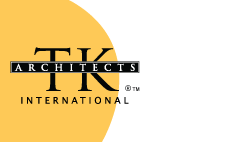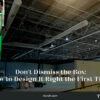By David Taylor, TK Architecs International.
September, 2015
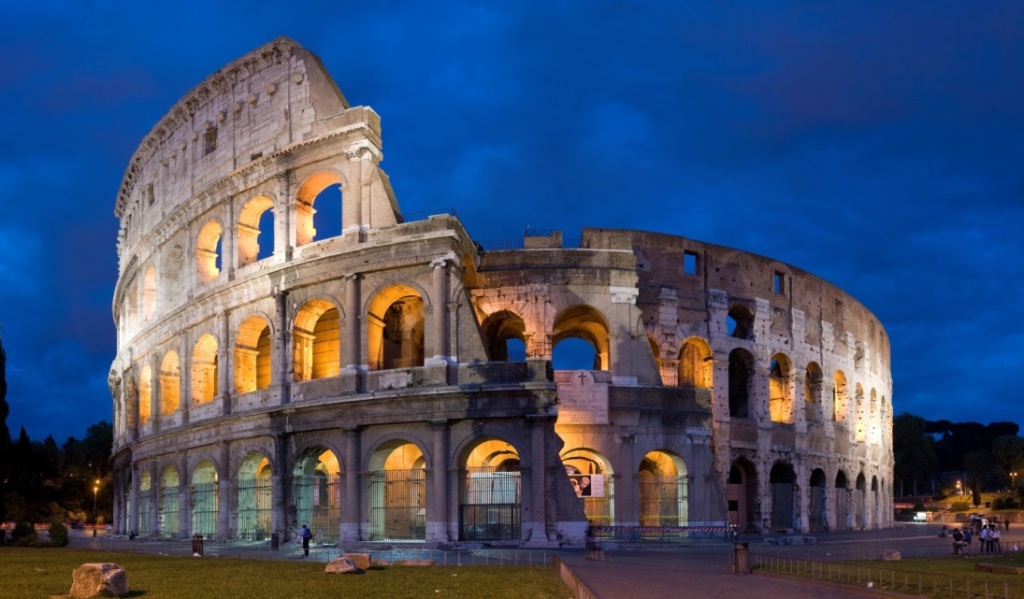
Back in Dallas, Texas 1995, one of the most revolutionary theaters was built: The AMC Grand 24. It is widely regarded as the first 24-screen multiplex with stadium seating in the world. The public loved it. Stadium seating was so innovative that it sold to packed crowds and they literally had to bus in patrons into their packed parking lots. Cinema owners across the nation were looking at what AMC had accomplished and, at times, stopped construction on their projects to implement this new style of theater configuration. It was a cinema arms race. The sloped floor style theaters were slowly going out of business to this new theater stadium seating arrangement.
But stadium seating is not a new concept… Although it was relatively new to cinemas in the US, there are examples such as the Colosseum at Piazza del Colosseo in Rome which was built in 80AD. Its use of tiered step arrangement or stadium seating effectively arranged spectators into a great viewing with easy entrance and exit. The Colosseum concrete arches were innovative at the time, however in our modern era, theaters are constructed in very different methods. At the Grand 24 and many other cinemas at that time, US theaters were constructed with raked hot rolled steel and elevated concrete decking from the bottom to the very rear row. At the turn of the century, the structural supports were being altered from entire hot rolled steel supports to newer, more cost effective arrangements such as cold form steel framing and EPS structural foam.
Although stadium seating is playing a back seat to newer cinema trends such as luxury seating with restaurant service or immersive picture and sound, it is still rather relevant in auditorium layouts. Structural engineers are, at times, tasked with choosing the most cost effective support for theater configurations. But what is the most cost effective structural support? In the following scenarios, the structural supports will be evaluated for three different layouts: (1) modified sloped / stadium seating, (2) luxury recliner conversion and (3) standard tiered stadium seating for luxury recliner risers. The cost evaluations and assumptions (Ref. #1 &2) for the various scenarios are shown below. In all cost analyses, the cost of labor and materials will vary based on location and subcontractor’s familiarity with its construction, however the costs/unit were based on RS Means 2014 city neutral location (City factor of 1.0) and cold form framing was assumed to be generally 72% of material costs. (Ref. #3)
Generally speaking, there are advantages and disadvantages to all types of structural support. EPS Foam or Geofoam can be bulk ordered (without shop drawings), delivered in 2-3 weeks and field cut on site. But the waste can be up to 15 to 30%. With foam shop drawings ordered, the waste is cut down to 3% but the drawback is that there is typically a 6-9 week lead time on the order.(Ref.#2). Cold form steel, on the other hand, (in small 10 to 12 foot lengths) is typically readily available but the metal decking can take up to 4-6 weeks for delivery.(Ref.#3). With elevated concrete deck, the joist spacing is typically 4’-0” (1.22m) to 8’-0” (2.44m) on center. Another flooring alternate to elevated concrete decking is USG’s Structo-Crete™ which is a ¾” thick structural cement board. Structo-Crete™ is amazingly durable and light but, as it is a newer material, lead times and costs can vary. One of the drawbacks to Structo-Crete™ is that it requires joist spacing to be 16” (406mm) to 24”(610mm) on center, a minimum of 18Ga (or 1.245mm) thick and 1-5/8” (42mm) wide.
Scenario #1 involves a composite mix of sloped floor and stadium seating at rear of auditorium. There are two options utilized in this study: Concrete on EPS foam and cold form framing with elevated concrete deck. We see that the cost difference between two (less than 9%) types show a slight advantage towards EPS foam or Geofoam. It is estimated that the concrete on foam would cost $19,174.70. Alternatively, cold form steel with elevated concrete decking would cost $20,852.20.
Scenario #2 is a luxury recliner renovation on existing stadium seating. In about 60% of most existing conditions, the framing does not have sufficient capacity for the additional weight of concrete on foam. Although foam is light (less than 1lbs / ft3 or 157 N/m3), the 4 inches (102mm) of concrete weighs 50 lbs / ft2 or 2.39 kN/m2) and is quite a weight addition. However in situations where the existing framing capacities are robust, there are other aspects to consider. In retrofits, speed of construction is typically very important. Although concrete on foam is cheaper in this scenario ($12,188.75), the extra week or two to wait for concrete to cure and allow for finish flooring may be too much time out of the schedule. A lighter and faster (without cure time) installation would be Structo-Crete™ on cold form framing ($21,821.30) although it is about 80% more expensive. A drawback to the cold form framing is the “hollow” sound that can occur without some acoustical insulation to deaden patrons’ steps. This is a scenario of merely speed versus construction cost. In some owners’ way of thinking, two weeks out of schedule can recoup cost.
Scenario #3 is a stadium seating luxury recliner configuration with either geofoam or cold form steel on elevated concrete deck. Geofoam appears to be the winner at $11,843.61 when compared to metal framing’s cost of $18,737.73 but, as stated above, the installation and material costs vary by location. In the last 6 months in Orlando, FL, the same general arrangement was bid. Cold form framing won out right, in cost and construction time.
In review of the three scenarios, the costs of material vary but the advantages and disadvantages may attract or detract owners or contractors. Regardless of whether the next theater auditorium is stadium seating or sloped floor, TK Architects will look at the client’s overall needs whether it is speed, cost, quality, life cycle, or merely desire. TKA is one of the most experienced entertainment A/E firms in the world. Give TKA a call or email if you should ever need assistance.
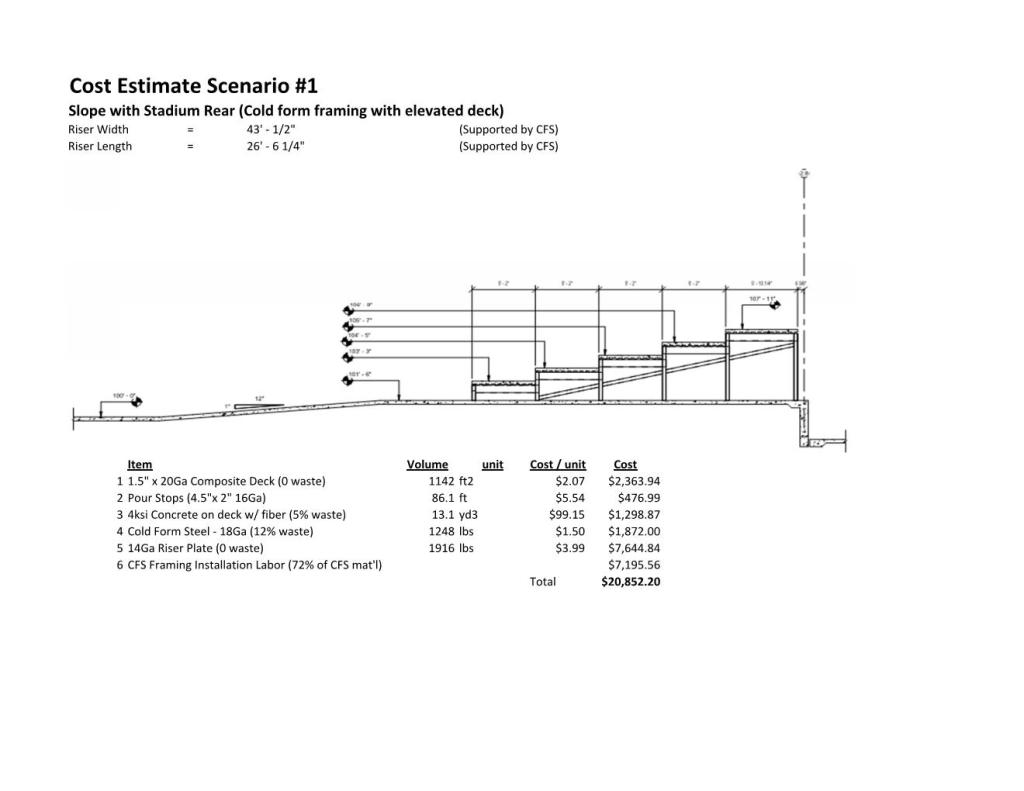
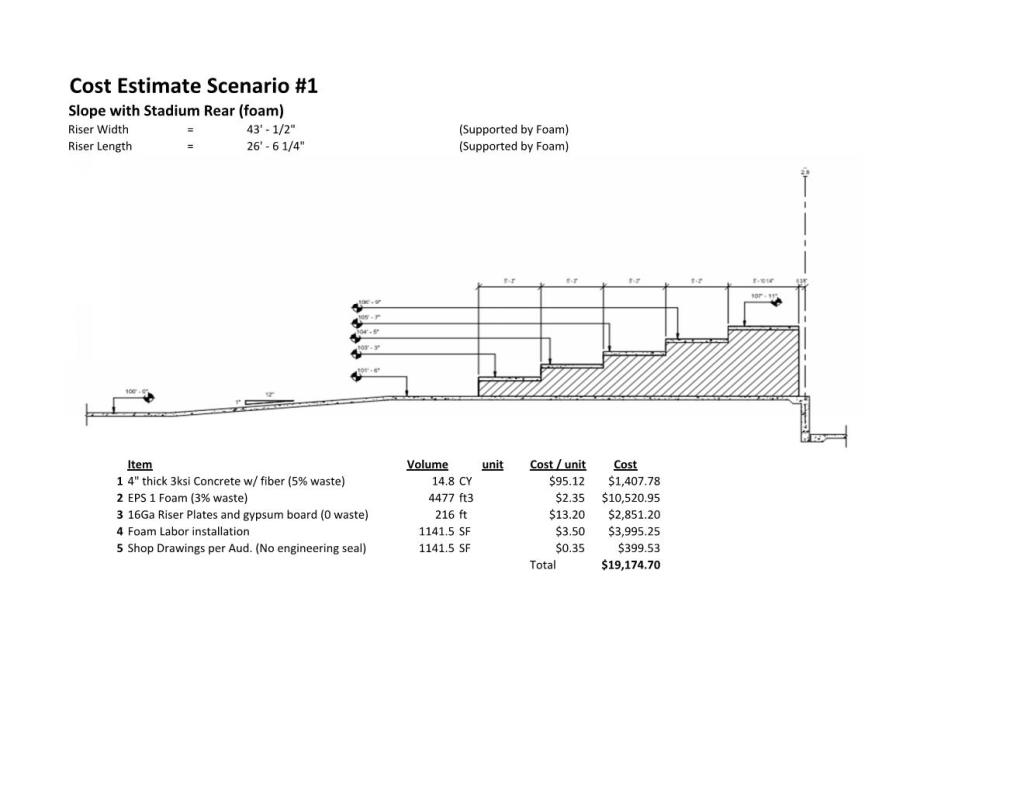
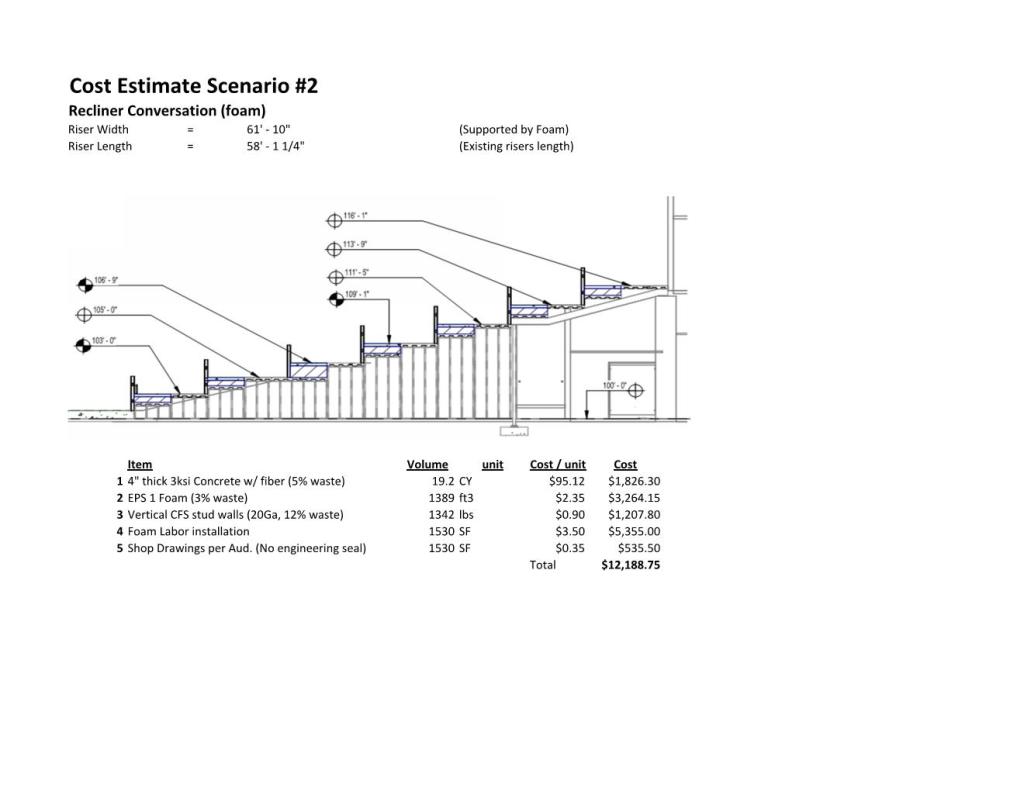
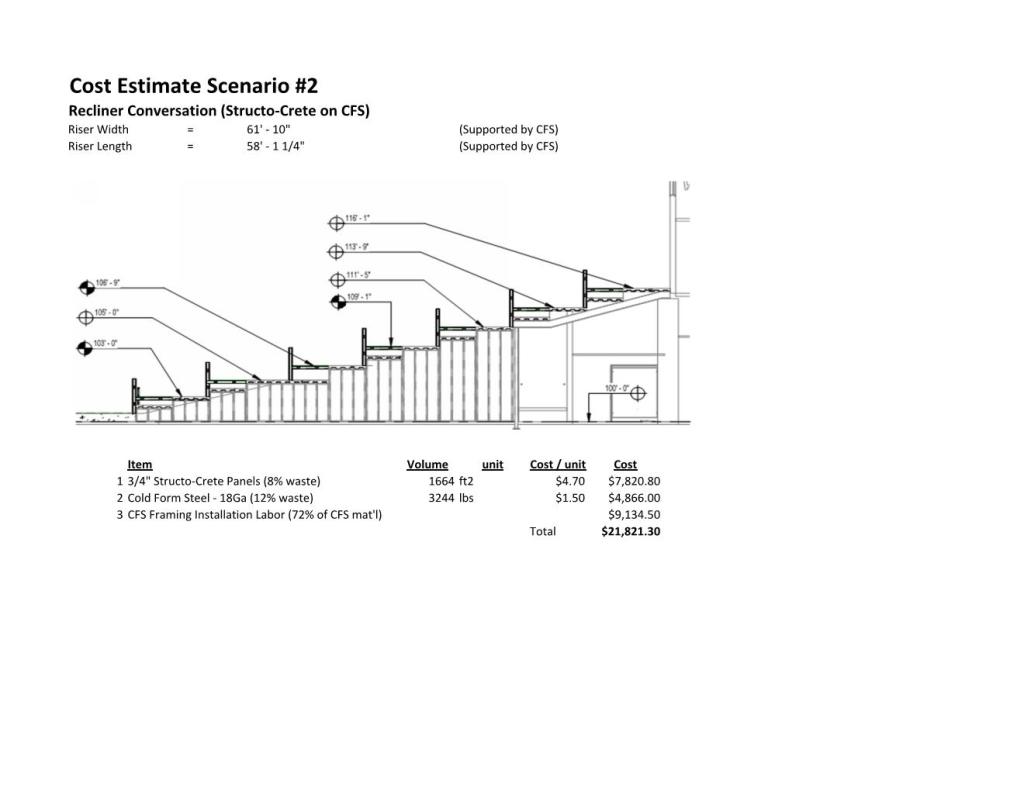
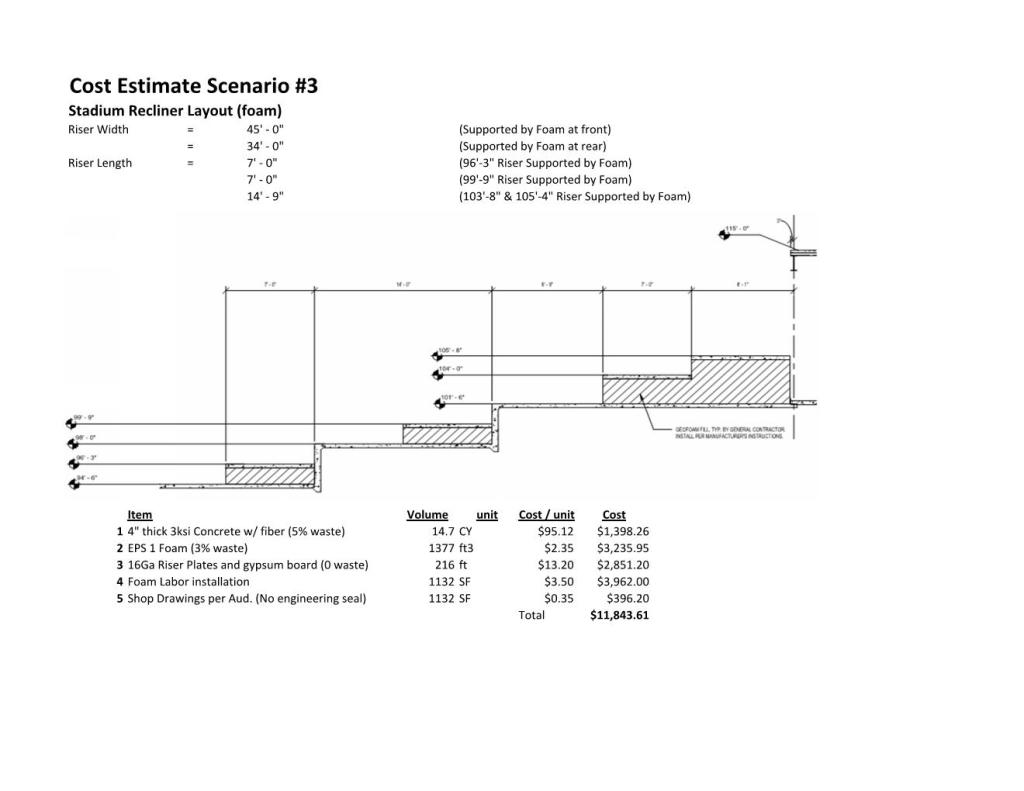
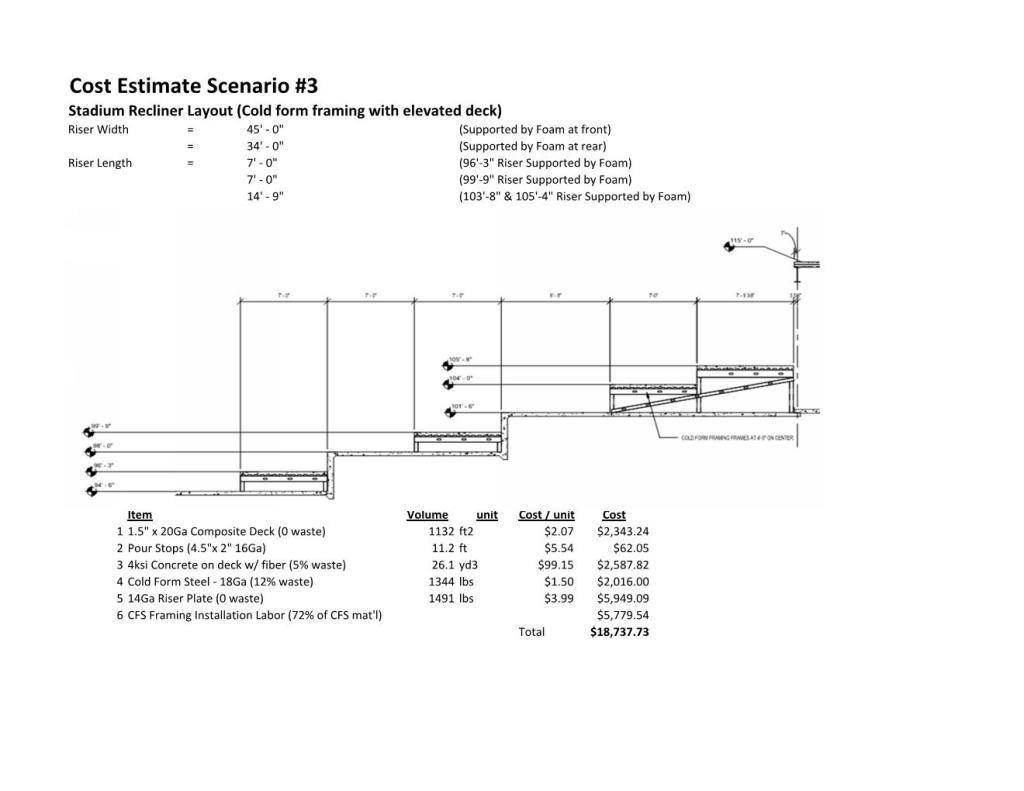
References:
- RSMeans (September 30th, 2013). Building Construction Cost Data 2014 Book. RSMeans; 72nd
- T. Moson, Stadium Seating Enterprises, personal communication (June 6th, 2015).
- D. R. Taylor (2/16/2015). Data from TKA new and renovation projects from 2013-2015. [Costs consider overbuilding risers and were modified to neutral base costs from RSMeans city modification factor.]
